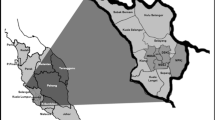Abstract
To support sustainable long-term developments and minimize urban sprawl, Low Impact Development (LID) practices have been highlighted for a long time. They are useful, but understanding on LID practices and broadening the LID applications among practitioners is another important task. The main purpose of this study is to understand local professionals’ perceptions on different LID techniques and awareness on their benefits, while also gathering opinions on barriers and incentives. An online survey was delivered to 91 recipients, a diverse pool of stakeholders involved in the Energy Corridor District (ECD) area in Houston, Texas. The majority of the respondents answered that they were familiar with LID. The techniques that have been applied to a larger extent are Detention Ponds and Bioswales. When asked about applying techniques in the future, Retention Ponds, Rain Gardens, Bioswales, and Detention Ponds are highly probable items. Decision-makers identified the major barriers as being the lack of incentives for their application, lack of knowledge of the client, and lack of knowledge of the development team. Education programs would be the most successful incentive, followed by financial incentives and innovations in policy systems. Urban planners have the most expertise in LID practices, followed by architects/landscape architects, while developers were found not to be very familiar with the concepts. This study understands the current and practical opinions about LID from the decision-makers. Different groups understand the importance of education and identified a major barrier as the lack of policy instruments. Some innovation in regulations may elevate proper LID practices.


Similar content being viewed by others
References
Ando AW, Netusil NR (2013) A tale of many cities: using low-impact development to reduce urban water pollution. Choices. Quarter 3. Available online: http://choicesmagazine.org/choicesmagazine/theme-articles/innovations-in-nonpoint-source-pollution-policy/a-tale-of-many-cities-using-low-impact-development-to-reduce-urban-water-pollution
Barbosa A, Fernandes J, David L (2012) Key issues for sustainable urban stormwater management. Water Res 46(20):6787–6798
Benedict MA, McMahon ET (2006) Green infrastructure. Island, Washington, DC
CDS Market Research (2013) The energy corridor district land use & demographics. Retrieved from Houston, TX http://www.energycorridor.org/sites/ecd/media/Energy-Corridor-MD-2013_Report.pdf
Chapman C, Horner RR (2010) Performance assessment of a street-drainage bioretention system. Water Environment Research 82(2):109–119
Community Development Strategies (2011) The Houston energy corridor: 2011 land use and demographics. Retrieved from Houston, TX
Davis AP, Shokouhian M, Sharma H, Minami C (2006) Water quality improvement through bioretention media: nitrogen and phosphorus removal. Water Environment Research 78(3):284–293
DeNardo J, Jarrett A, Manbeck H, Beattie D, Berghage R (2005) Stormwater mitigation and surface temperature reduction by green roofs. Transactions of the ASAE 48(4):1491–1496
Dietz ME (2007) Low impact development practices: a review of current research and recommendations for future directions. Water Air Soil Pollut 186(1–4):351–363
Dolowitz D, Keeley M, Medearis D (2012) Stormwater management: can we learn from others? Policy studies 33(6):501–521
Foster J, Lowe A, Winkelman S (2011) The value of green infrastructure for urban climate adaptation. Center for Clean Air Policy, February
Glass C, Bissouma S (2005) Evaluation of a parking lot bioretention cell for removal of stormwater pollutants. WIT Trans Ecol Environ 81:699–708
Gregoire BG, Clausen JC (2011) Effect of a modular extensive green roof on stormwater runoff and water quality. Ecol Eng 37(6):963–969
Hunt W, Smith J, Jadlocki S, Hathaway J, Eubanks P (2008) Pollutant removal and peak flow mitigation by a bioretention cell in urban Charlotte, NC. J Environ Eng 134(5):403–408
Kessler R (2011) Stormwater strategies: cities prepare aging infrastructure for climate change. Environ Health Perspect 119(12):A514
Low Impact Development Center (2000) Low impact development: a literature review. Retrieved from Washington, DC http://www.lowimpactdevelopment.org/pubs/LID_litreview.pdf
Price R, Vojinovic Z (2008) Urban flood disaster management. Urban Water J 5(3):259–276
Qin H-p, Li Z-x, Fu G (2013) The effects of low impact development on urban flooding under different rainfall characteristics. J Environ Manag 129:577–585
Roehr D, Kong Y (2010) Runoff reduction effects of green roofs in Vancouver, BC, Kelowna, BC, and Shanghai, PR China. Canadian Water Resources Journal 35(1):53–68
Roseen R, Ballestero T, Houle J, Avelleneda P, Wildey R, Briggs J (2006) Storm water low-impact development, conventional structural, and manufactured treatment strategies for parking lot runoff: performance evaluations under varied mass loading conditions. Transportation Research Record: Journal of the Transportation Research Board 1984:135–147
Rossman LA (2010) Modeling low impact development alternatives with SWMM. J Water Manage Model R236–11:167–182
Saha D, Paterson RG (2008) Local government efforts to promote the “three Es” of sustainable development survey in medium to large cities in the United States. J Plan Educ Res 28(1):21–37
Schwartz M, Cody R (2009) Managing stormwater with low impact development practices: addressing barriers to LID. Retrieved from Washington, DC
Sohn W, Kim JH, Newman G (2014) A BLUEprint for Stormwater infrastructure design: implementation and efficacy of LID. Landscape Research Record 2:50–61
Sun X, Davis AP (2007) Heavy metal fates in laboratory bioretention systems. Chemosphere 66(9):1601–1609
Texas Legislative Council (2002) Overview of local taxes in Texas. Retrieved from Austin, TX
The Energy Corridor (2016) Largest Employers in the Energy Corridor Retrieved from http://www.energycorridor.org/business/largest-employers
United States Environmental Protection Agency (2016) Urban runoff: low impact development Retrieved from https://www.epa.gov/polluted-runoff-nonpoint-source-pollution/urban-runoff-low-impact-development
University of Arkansas Community Design Center (2010) Low impact development: a design manual for urban areas. University of Arkansas Press, Fayetteville
van Roon M (2007) Water localisation and reclamation: steps towards low impact urban design and development. J Environ Manag 83(4):437–447
Acknowledgements
This work was supported by Incheon National University Research Grant in 2016. The authors would also like to express our appreciation for generous help from the leaders of the Energy Corridor Management District, Mr. Clark Martinson, General Manager, and Mr. David Hightower, President. Our appreciation is also extended to Dr. Shannon Van Zandt and Dr. Susan Rodiek in Texas A&M University. They shared their insights and provided helpful comments for this study.
Author information
Authors and Affiliations
Corresponding author
Rights and permissions
About this article
Cite this article
Kim, JH., Kim, H.Y. & Demarie, F. Facilitators and Barriers of Applying Low Impact Development Practices in Urban Development. Water Resour Manage 31, 3795–3808 (2017). https://doi.org/10.1007/s11269-017-1707-5
Received:
Accepted:
Published:
Issue Date:
DOI: https://doi.org/10.1007/s11269-017-1707-5




